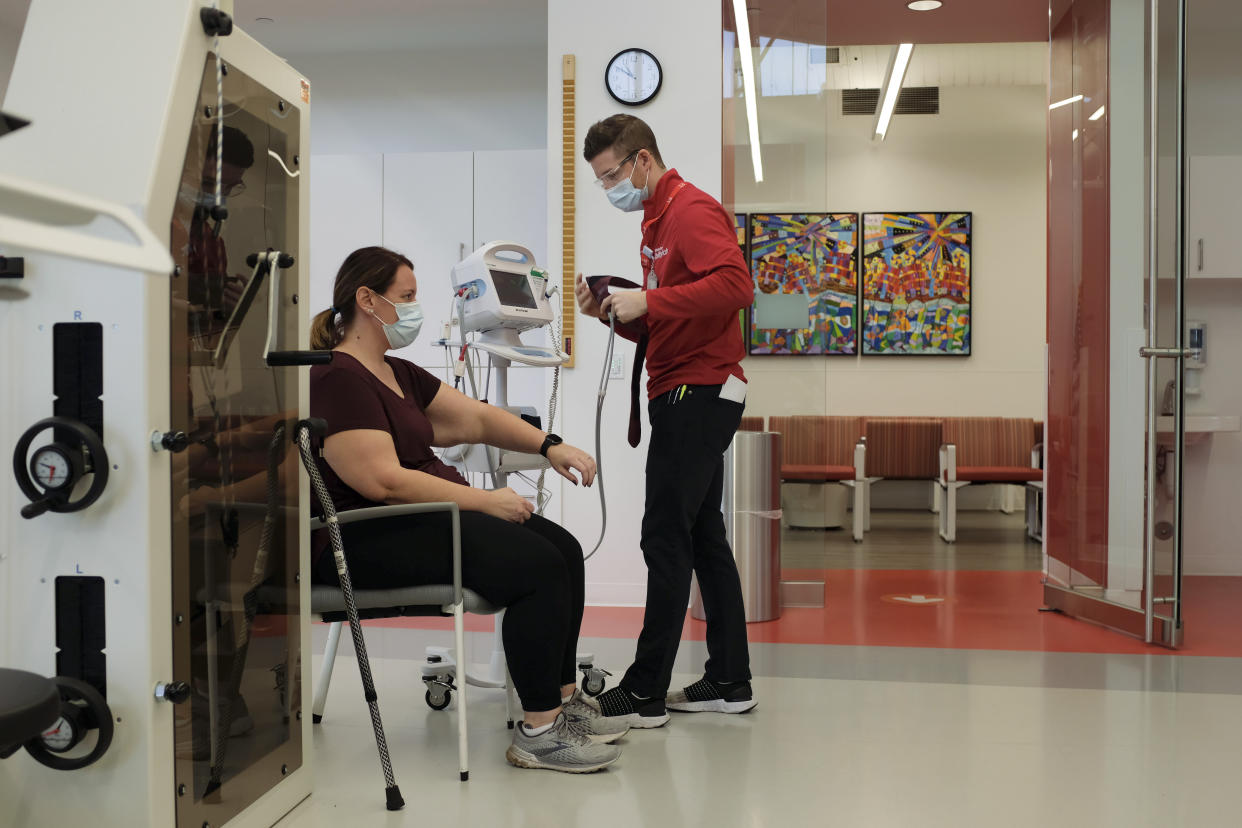New Report Underscores the Seriousness of Long COVID

One of the nation’s premier medical advisory organizations has weighed in on long COVID with a 265-page report that recognizes the seriousness and persistence of the condition for millions of Americans.
More than four years since the start of the coronavirus pandemic, long COVID continues to damage many people’s ability to function, according to the National Academies of Sciences, Engineering and Medicine, a nongovernmental institution that advises federal agencies on science and medicine.
“Long COVID can impact people across the life span, from children to older adults, as well as across sex, gender, racial, ethnic and other demographic groups,” it said, concluding that “long COVID is associated with a wide range of new or worsening health conditions and encompasses more than 200 symptoms involving nearly every organ system.”
Sign up for The Morning newsletter from the New York Times
Here are some of the National Academies’ findings, drafted by a committee of 14 doctors and researchers:
How many people have long COVID?
The report cited data from 2022 suggesting that nearly 18 million adults and nearly 1 million children in the United States have had long COVID at some point. At the time of that survey, about 8.9 million adults and 362,000 children had the condition.
Surveys showed that the prevalence of long COVID decreased in 2023 but, for unclear reasons, has risen this year. As of January, data showed nearly 7% of adults in the United States had long COVID.
Diagnosis and consequences
There is still no standardized way to diagnose the condition and no definitive treatments to cure it. “There is no one-size-fits-all approach to rehabilitation, and each individual will need a program tailored to their complex needs,” the National Academies said, advising that doctors should not require patients to have a positive coronavirus test to be diagnosed with long COVID.
The report said that some of the most troublesome symptoms — like brain fog and chronic fatigue — can prevent people from returning to work and should make them eligible for disability payments, though their symptoms may not fit the Social Security Administration’s current disability categories.
“Long COVID can result in the inability to return to work (or school for children and adolescents), poor quality of life, diminished ability to perform activities of daily living, and decreased physical and cognitive function for six months to two years or longer,” the report said.
People most at risk
People who become more seriously ill from their initial coronavirus infection are more likely to have long-term symptoms. Those who were sick enough to be hospitalized were two to three times as likely to develop long COVID.
But, the report said, “even individuals with a mild initial course of illness can develop long COVID with severe health effects.” And “given the much higher number of people with mild versus severe disease, they make up the great majority of people with long COVID.”
Women are about twice as likely to develop long COVID. Other risk factors include not being adequately vaccinated against the coronavirus, having preexisting medical conditions or disabilities and smoking.
Long COVID in children
Children are less likely than adults to develop long COVID and are more likely to recover from it, but some children “experience persistent or intermittent symptoms that can reduce their quality of life” and “result in increased school absences and decreased participation and performance in school, sports and other social activities,” the report said.
Recovery from long COVID
Some people recover with time, and there’s some evidence that after a year, many people’s symptoms have diminished. But some research suggests that recovery slows down or plateaus after that first year, the report said.
Because long COVID varies so widely from person to person and affects so many body systems, each case must be approached individually.
For some people, “returning to work too early may result in health deterioration, and a gradual return to work plan may be advised,” the report said, especially for people with post-exertional malaise, a symptom that involves depleted energy or setbacks after doing activities that involve physical or mental exertion.
Employers may need to offer accommodations to returning employees, like allowing them to take frequent breaks or work remotely.
Some similarities to other chronic conditions
“Long COVID appears to be a chronic illness, with few patients achieving full remission,” the report said.
Some symptoms are like those of other conditions that emerge following infections, including myalgic encephalomyelitis/chronic fatigue syndrome, fibromyalgia and postural orthostatic tachycardia syndrome.
The biological cause of the symptoms is unclear. Theories include inflammation, fragments of remaining virus and immune system dysregulation.
Equity issues make long COVID worse
Long COVID presents more obstacles for people who face economic challenges or discrimination because of their race or ethnicity, where they live or how much education they have.
Such patients may encounter more skepticism about their symptoms, may be less able to take time off from work and may live farther from long COVID clinics or treatment programs.
c.2024 The New York Times Company


